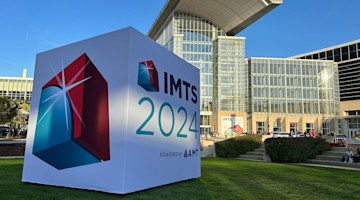At AMT’s 2021 MFG Meeting and MTForecast conference, Nov. 2-5, in Denver, Colorado, Mark Killion, CFA, director of U.S. industry for Oxford Economics, will discuss his forecast for manufacturing and the machine tool sector as well as where the biggest growth opportunities lie in the next one to two years.
A speaker at MTForecast for many years, Killion focuses on global industries and capital markets, translating complex data and information into actionable business strategies for growth, capital allocation, and risk management.
We asked Killion several questions to preview his presentation in November.
Q: What are the main opportunities and challenges for manufacturers in the next few years as the recovery continues?
Killion: This is a time of a great opportunity, but it is accompanied by heightened challenges and risks as well. When growth accelerates rapidly, as it is doing now, this can cause its own set of disruptions. I think that's the situation we're seeing now. We've had a pretty strong recovery in demand, but supplies have been lagging. These risks are very tangible – getting parts and people to the right place at the right time. We’ve seen this in transportation, port facilities, automotive, and other sectors.I do, however, think the opportunity outweighs the risks, because there is strong underlying demand in the economy, and many manufacturers currently have strong profit margins. I’ll discuss this in more detail as well as what to expect if this starts to level off.
Q: How will the infrastructure bill impact manufacturing?
Killion: The infrastructure bill will significantly impact the overall economy. Although the legislation isn’t final yet, it’s looking very good with strong bipartisan support. The biggest impacts will be in construction and manufacturing – in both durables and non-durables. Durables include construction equipment and materials, and non-durables include areas such as refineries, which produce the materials for roads and roofing, and the chemical industry, which is strongly influenced by construction activity as well. Infrastructure investments will go beyond roads and bridges and include the power grid, renewable energy, and expansion of broadband communication infrastructure. All of these will require a host of manufacturing components.
I expect infrastructure investment to keep both GDP and manufacturing growth above about 4% next year. And the timing couldn’t be better – just as the current recovery starts to slow, infrastructure spending will start to come online next year and the following year, providing a medium-term source of growth.
Q: What are a few steps manufacturers can take to take advantage of these opportunities?
Killion: There are many things that manufacturers can do to be positioned for this growth, and I will discuss these in more detail in November. Growth will be tied to investment in efficiency, software, and R&D. In my presentation, I will look at the markets that are being driven by investment and the rise in manufacturing productivity that we can expect to see.
To better prepare your business for what’s ahead, register to attend AMT’s 2021 MFG Meeting and MTForecast conference, Nov. 2-5, 2021, in Denver, Colorado. At this unique event, tailored to the manufacturing technology industry, you’ll hear more insight on the economy and gain a deeper understanding of market and technology trends to help you build a robust business strategy.






